|
|
Post by stevef45 on Jan 4, 2018 0:17:35 GMT -8
I need to build a frame for my slug project. I am buiding a Norfolk Southern RPU6D slug. The prototype uses a SD40-2 frame. I have been using an Athearn SD40-2 frame but while trying to cut down the metal portion that sits inside the fuel tank, i significantly weakened the frame. I plan to try and see if I can salvage the frame but I also looking at the idea of building a frame for it. Can anyone help me out with what kind of brass square tubing I will need to do this? Any other pointers/tips/suggestions to aid in building it?
|
|
|
|
Post by edwardsutorik on Jan 4, 2018 8:37:41 GMT -8
Don't have any ideas about the design, but if you're after brass shapes, there's the usual: ksmetals.comI also get brass and other metal shapes from: www.onlinemetals.comOnline will sell down to a foot long, plus shipping. Rectangular brass bar (instead of square tubing) might be of use. And, not being hollow, adds more weight. Ed |
|
|
|
Post by craigz on Jan 4, 2018 10:34:49 GMT -8
I need to build a frame for my slug project. I am buiding a Norfolk Southern RPU6D slug. The prototype uses a SD40-2 frame. I have been using an Athearn SD40-2 frame but while trying to cut down the metal portion that sits inside the fuel tank, i significantly weakened the frame. I plan to try and see if I can salvage the frame but I also looking at the idea of building a frame for it. Can anyone help me out with what kind of brass square tubing I will need to do this? Any other pointers/tips/suggestions to aid in building it? I've cut Athearn frames and stretched them using K&S brass stock, screws, and epoxy. They've held up fine for many years. Hopefully you can see a way to use brass shapes/strip etc to salvage the frame. |
|
|
|
Post by bdhicks on Jan 4, 2018 16:48:47 GMT -8
My suggestion is to have two 1/4" brass angle pieces the length of the hood to support the walkway, and then two 1/2"x1/4" rectangular brass tube pieces to spanning between them at the bolsters. From your prototype it looks like you can't have the motor extend below the frame, so just use a wide brass strip attached to the bottom of your frame for a motor mount.
Make a basswood jig to hold everything in place when you solder it together. Be careful to have the correct offset between the truck mount and the underside of your walkway.
|
|
|
|
Post by stevef45 on Jan 4, 2018 19:07:35 GMT -8
thanks for the suggestions. i have the brass sheet and need jb weld. I want to try and do a patch and see how it comes out. I need to make one more cut and I know it will weaken it more but i really would like to not have the large piece of metal under the frame just the area where the 4 screw holes are which could pass for the large box thats under the prototype.
|
|
|
|
Post by bdhicks on Jan 4, 2018 22:04:54 GMT -8
I was actually assuming you'd be soldering the frame, which is why I specified basswood for the jig.
|
|
|
|
Post by stevef45 on Jan 5, 2018 1:52:26 GMT -8
yes i'd be soldering the frame.
|
|
|
|
Post by Donnell Wells on Jan 5, 2018 12:28:56 GMT -8
Here is a scratch-built replacement frame for a Walthers Amtrak Dash 8. I started with a 12" x 1" x .032" piece of flat brass stock and cut it to fit the Walthers shell. Here are a few shots:
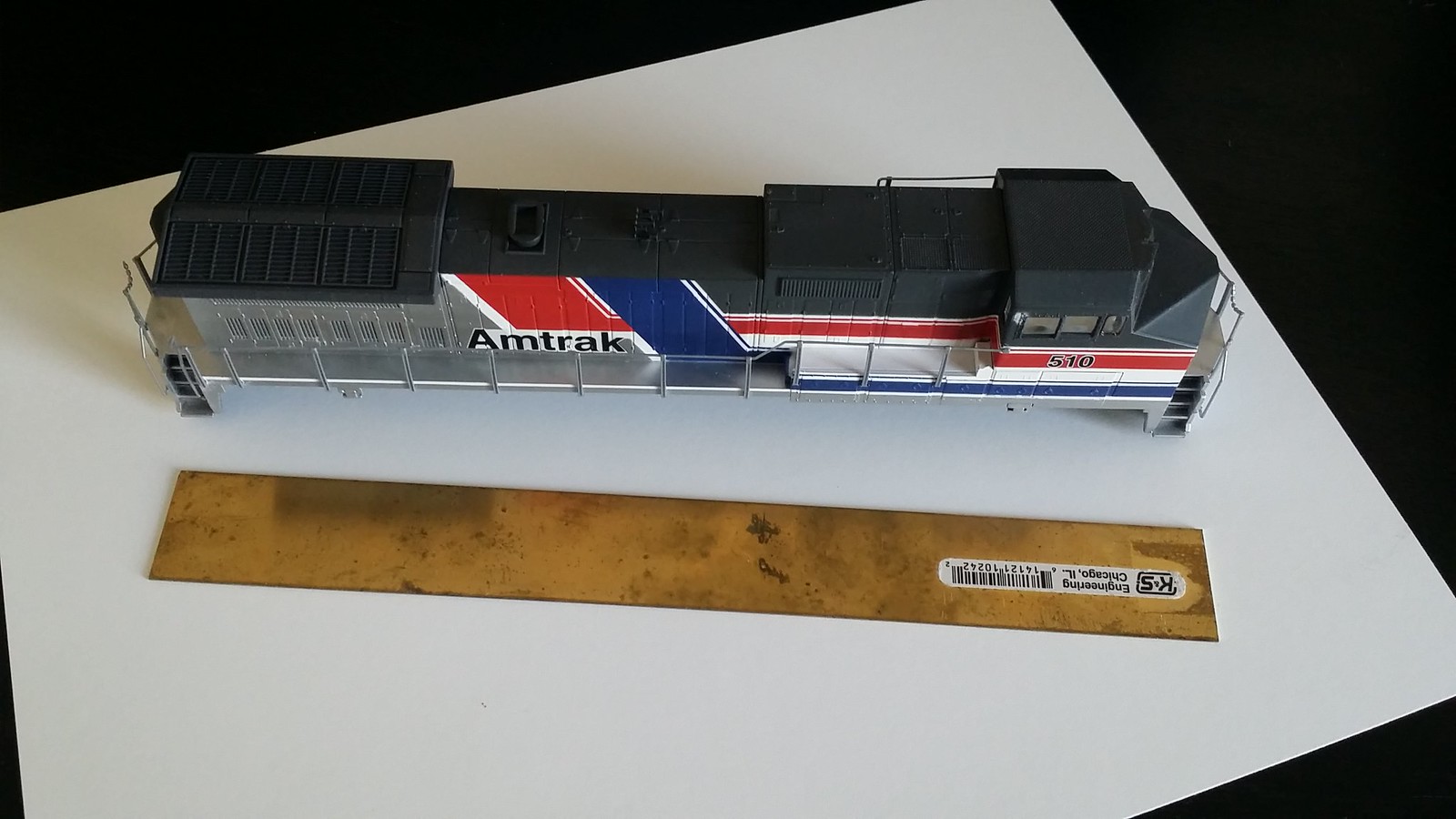
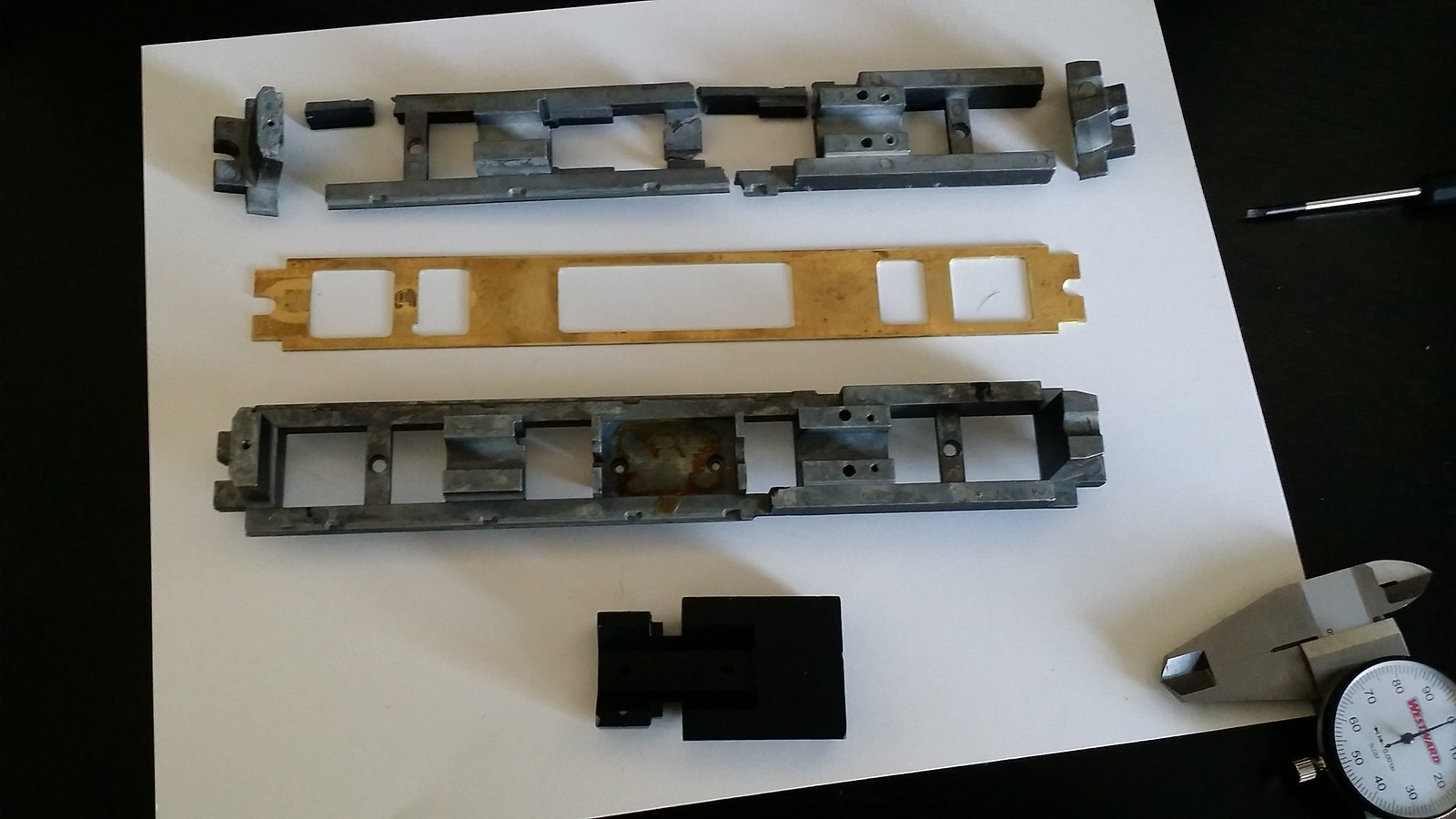
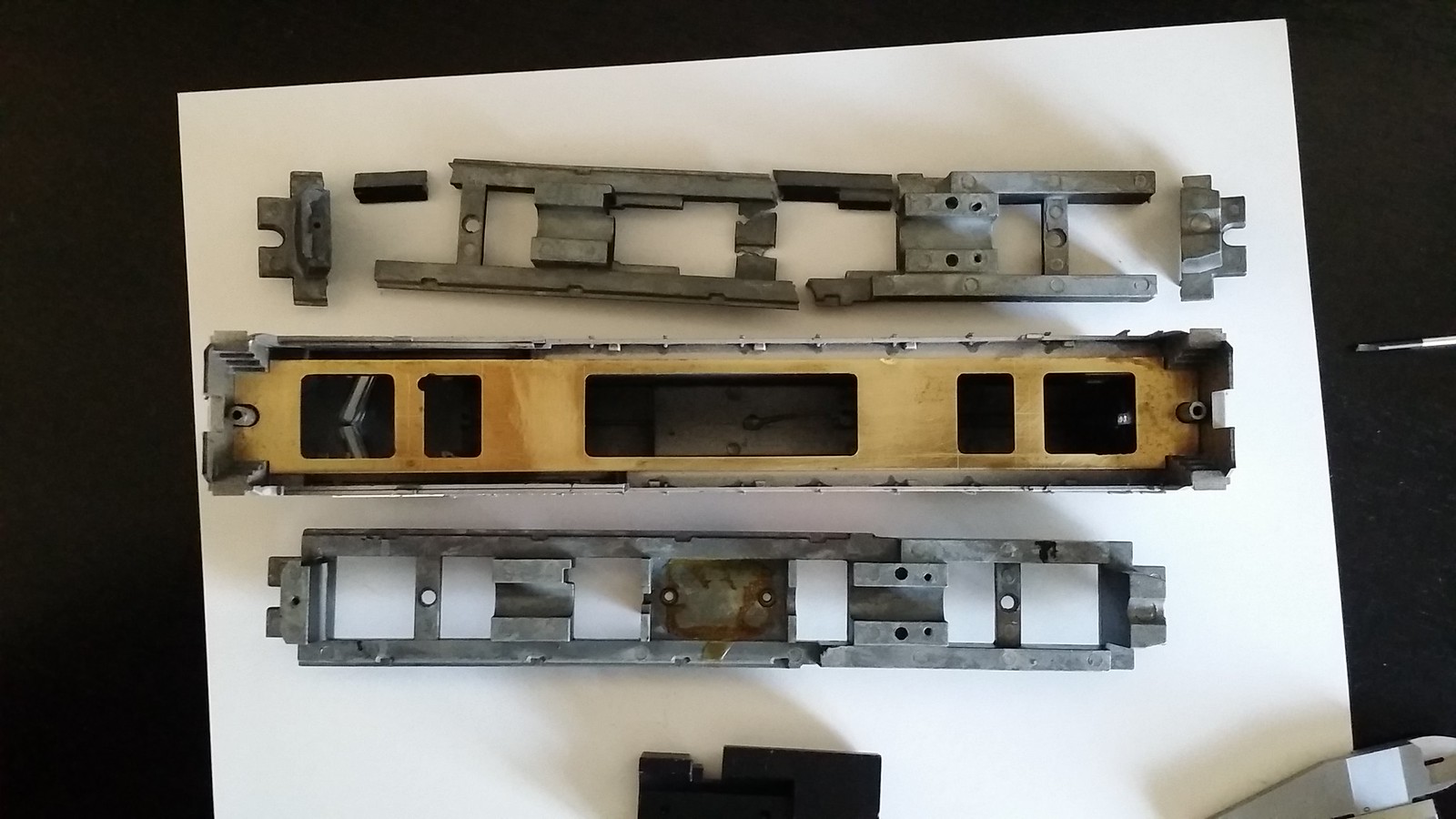
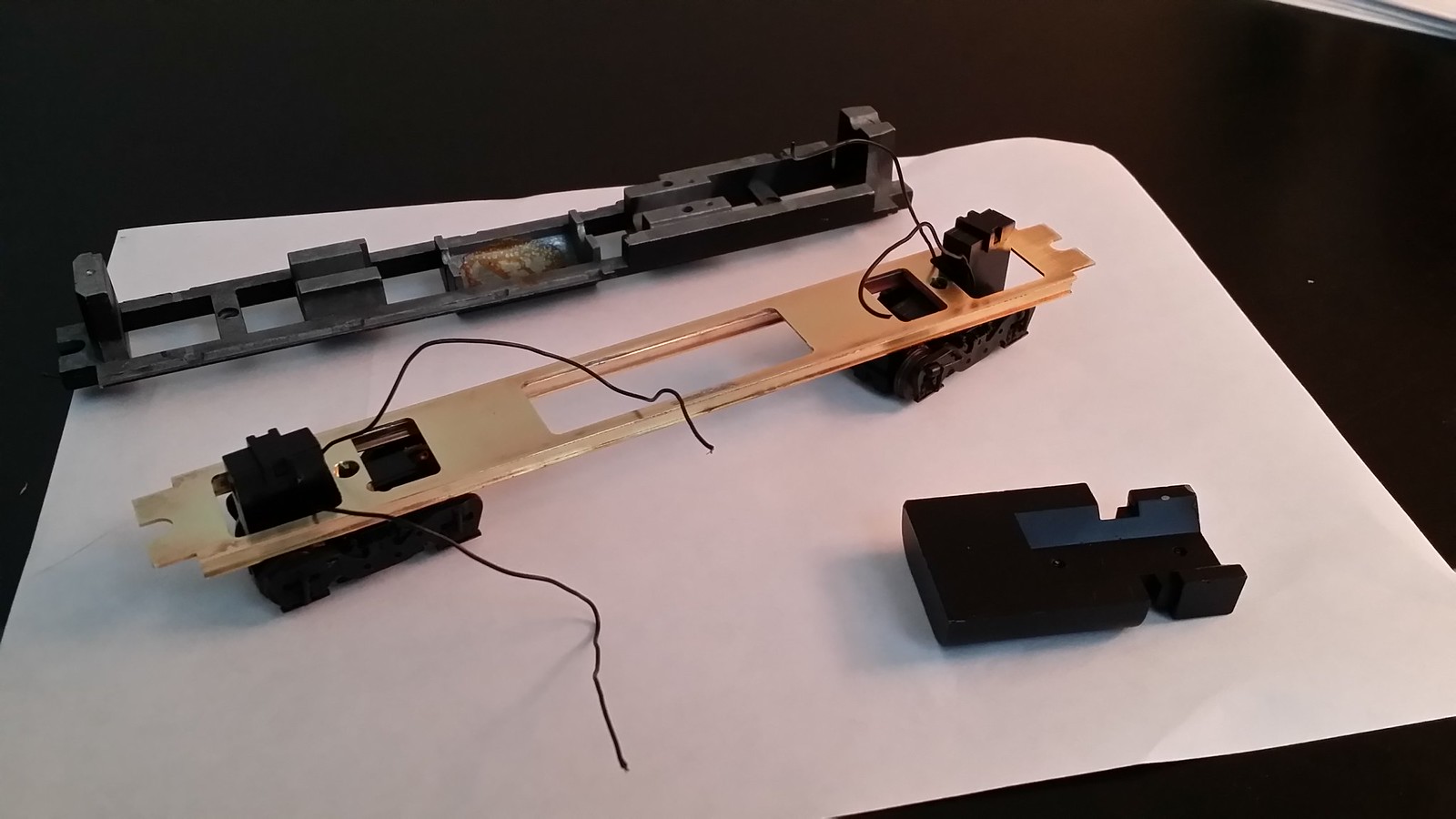
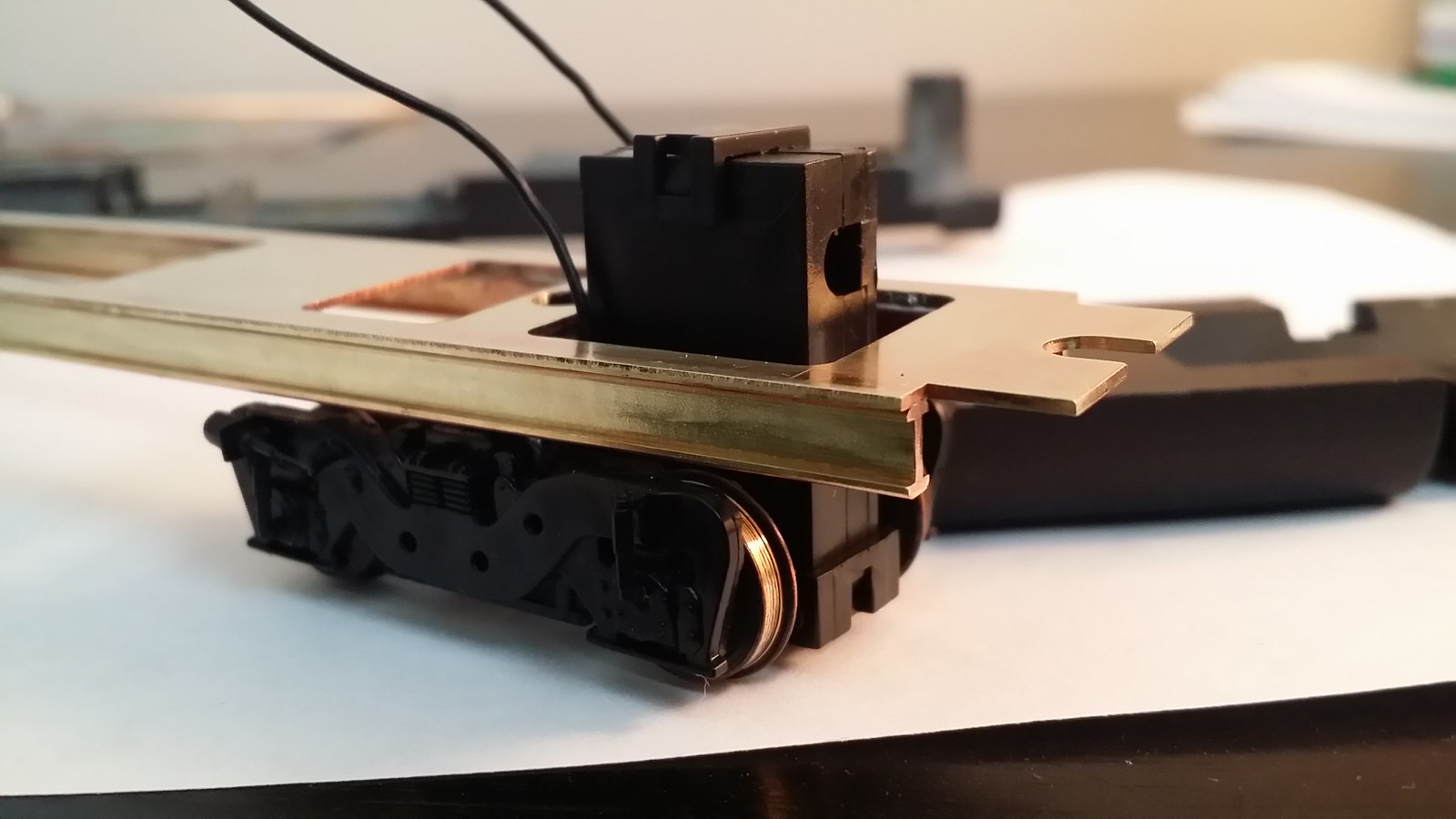
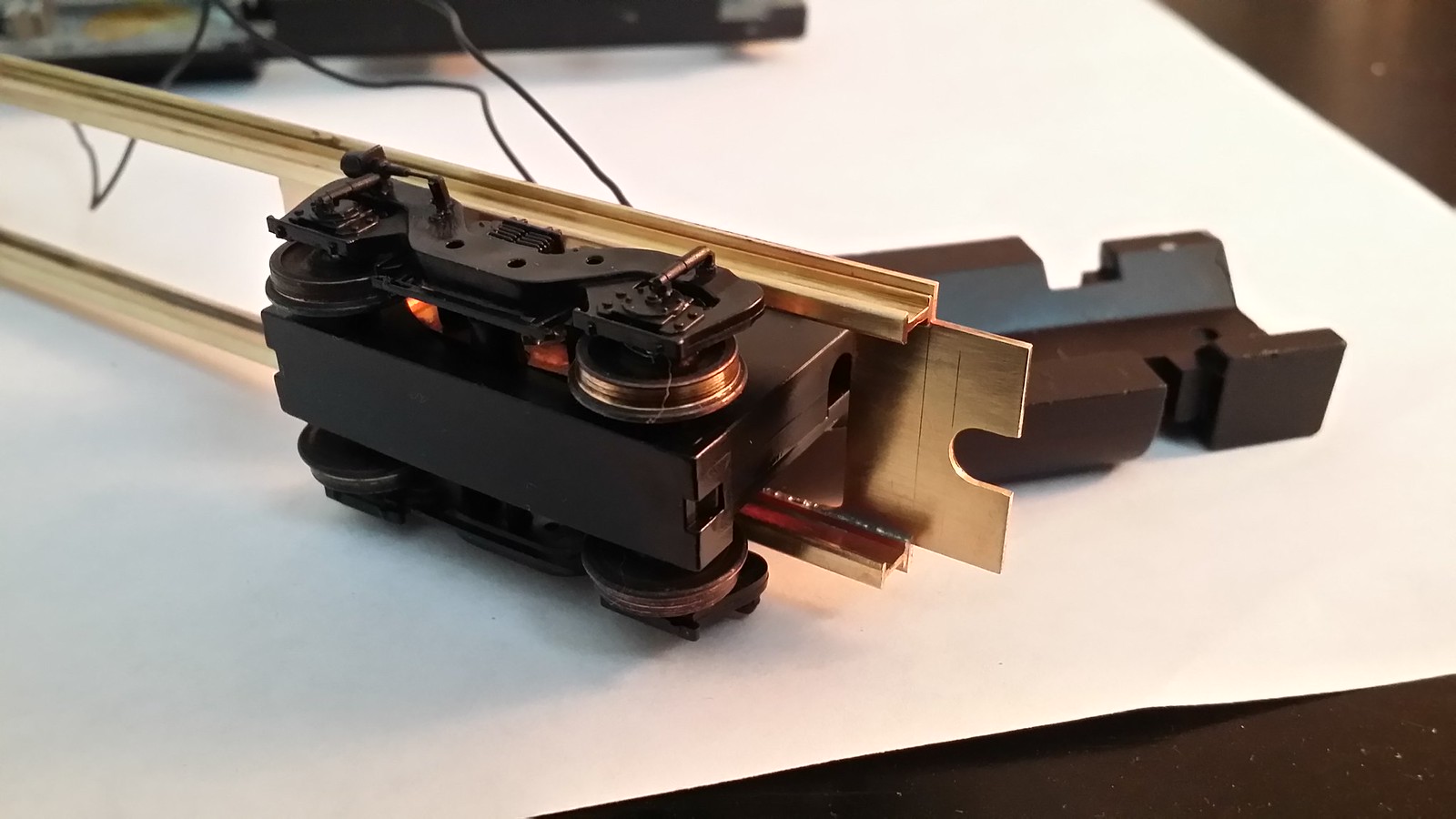
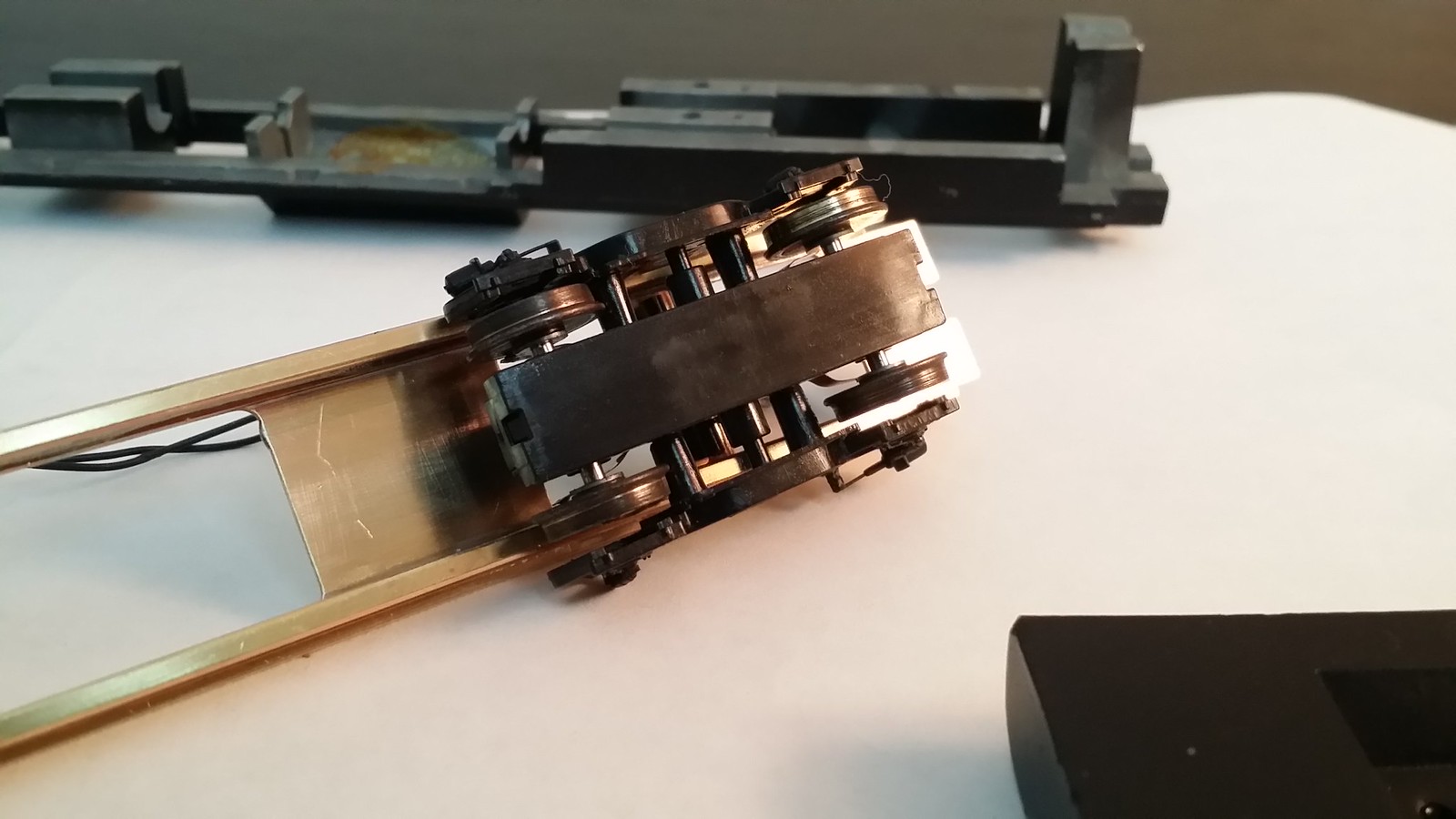
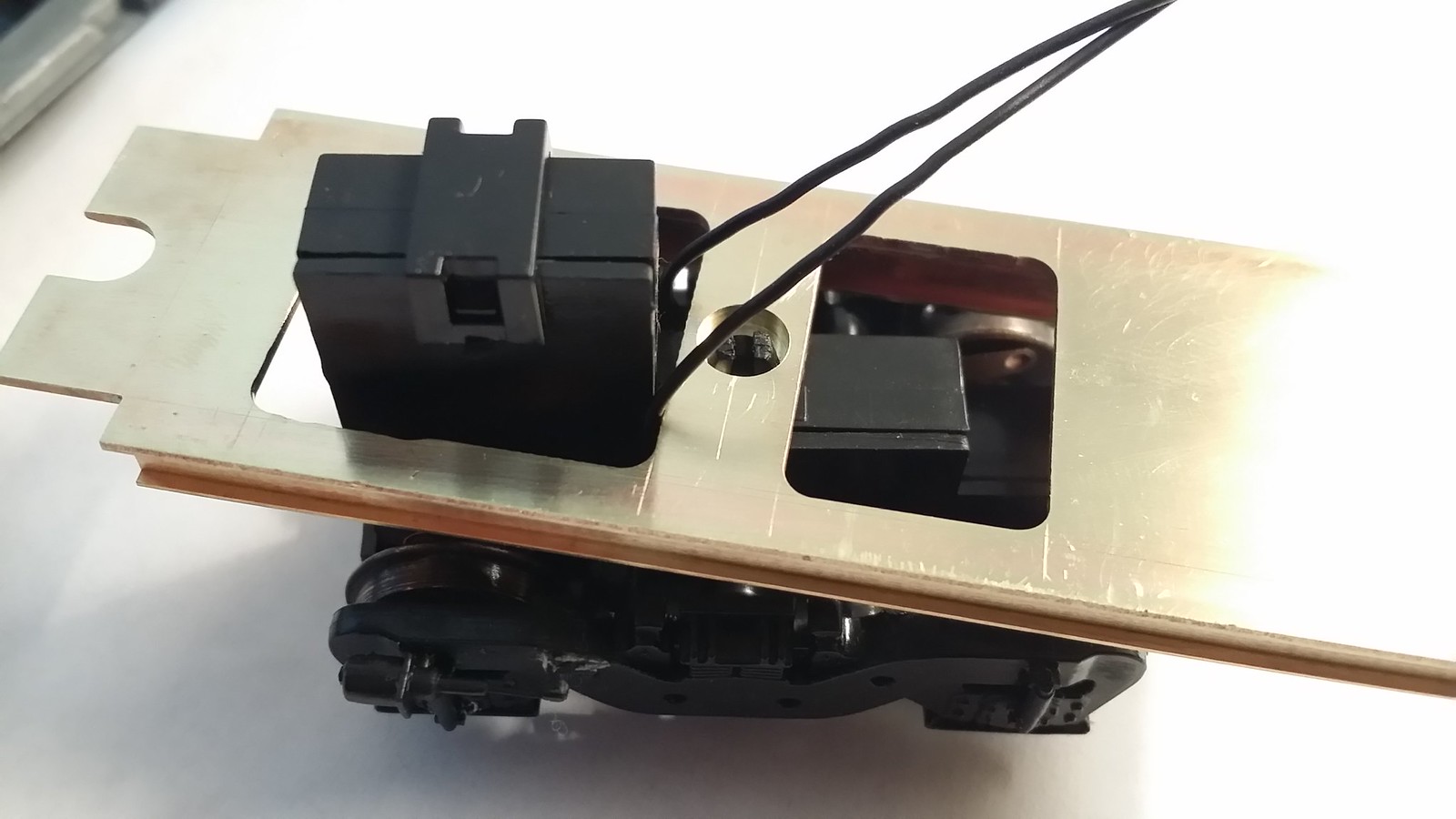
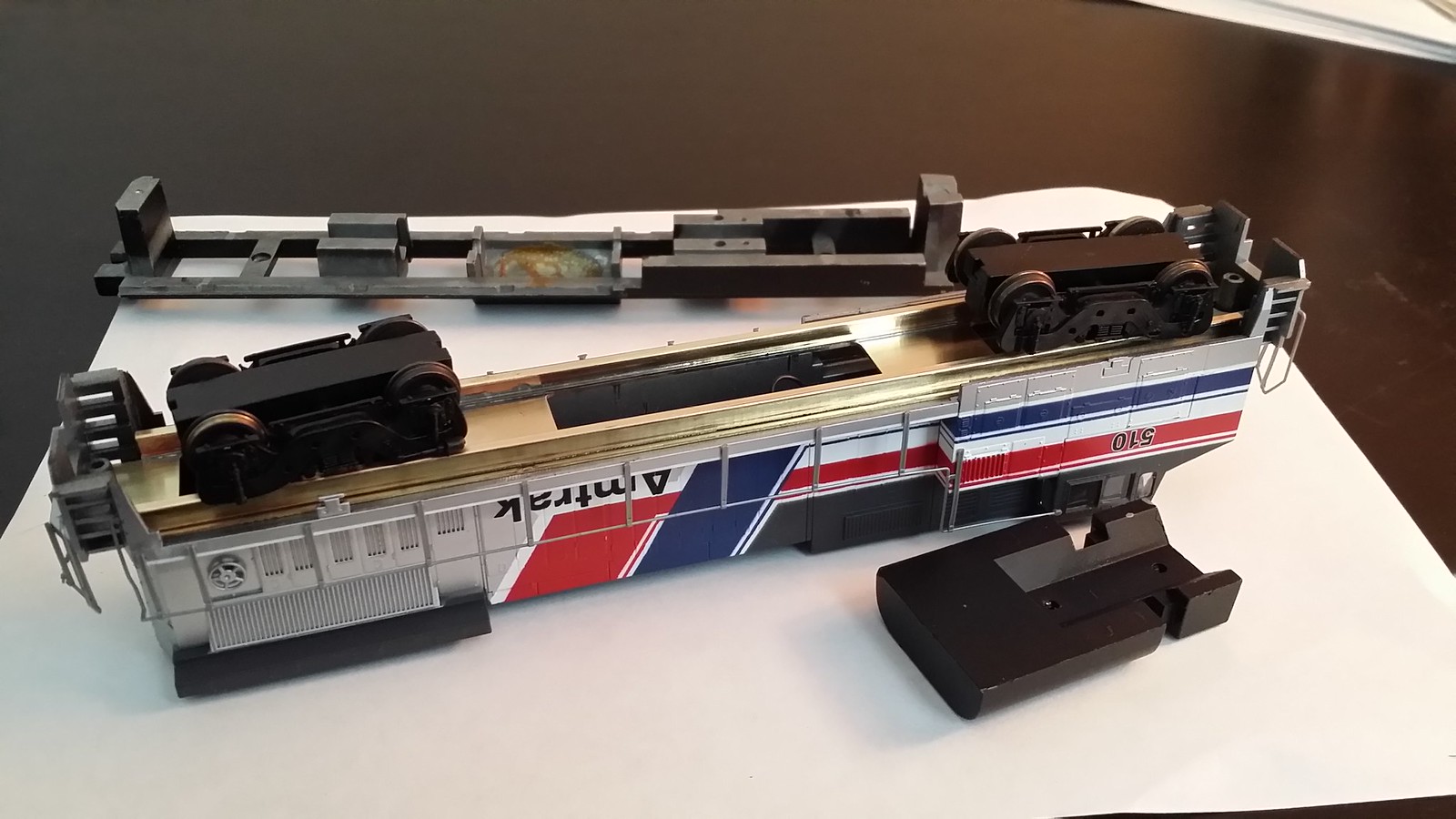
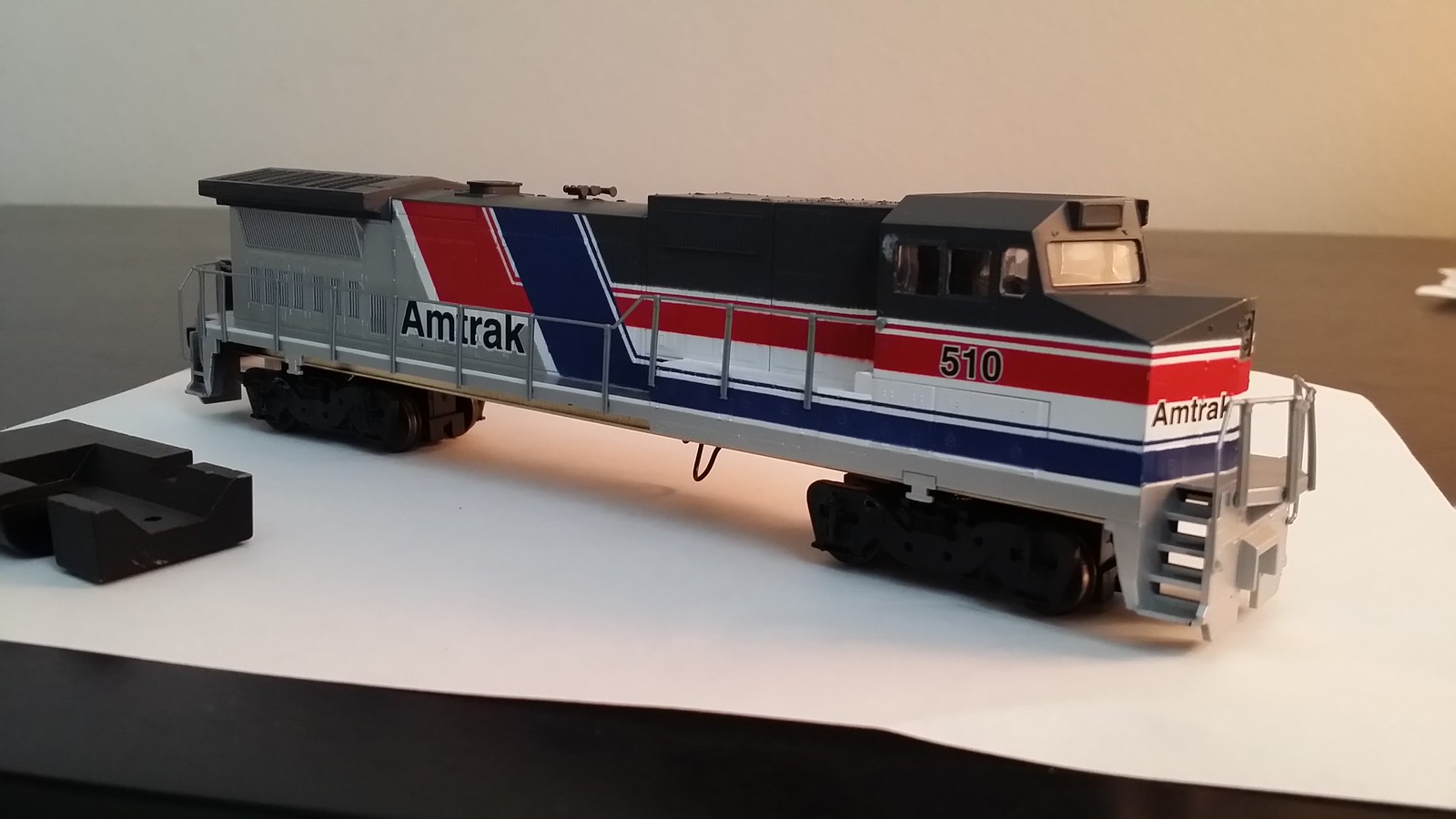
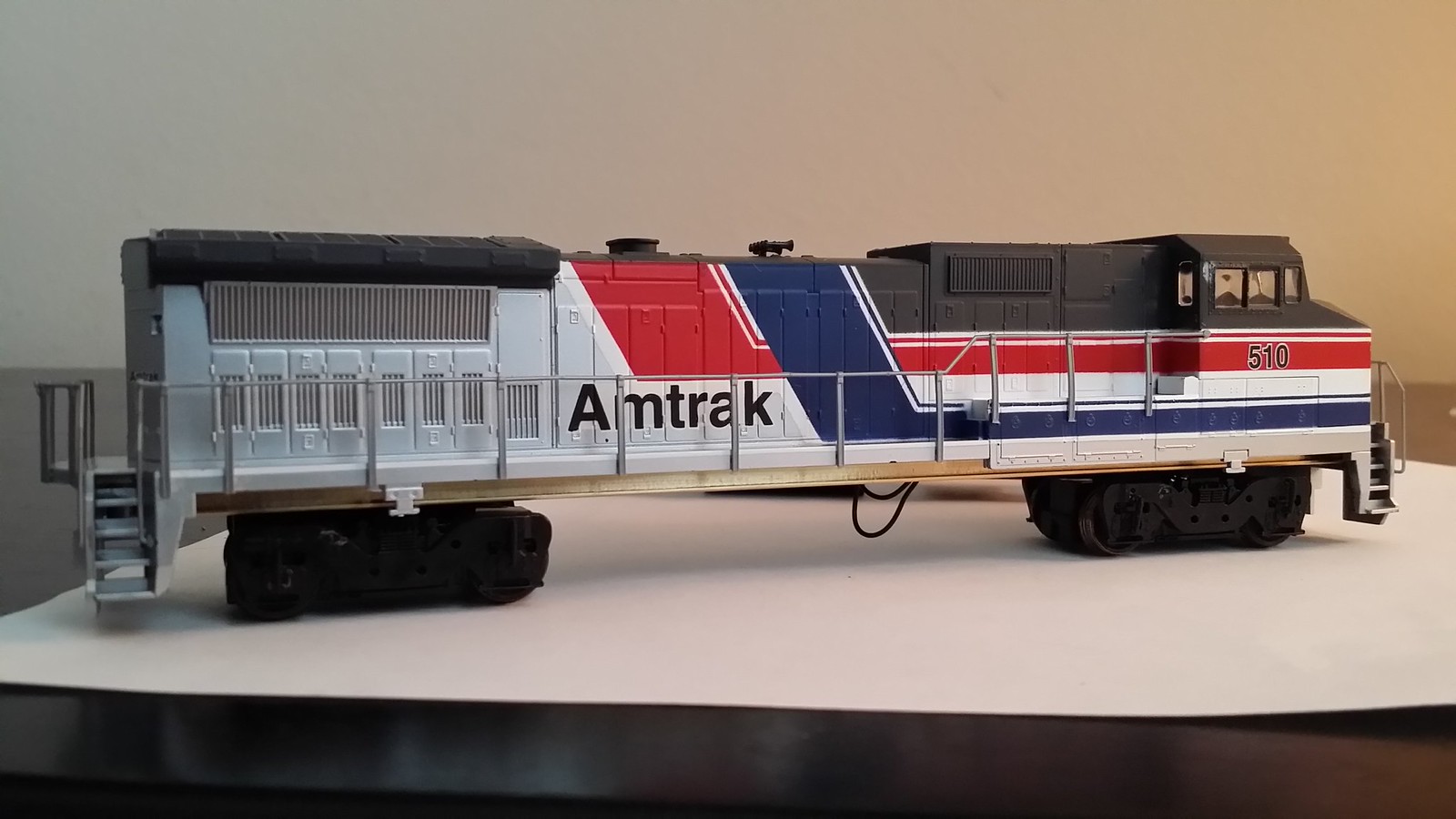
The bolsters are short lengths of .250" x .0625" brass bar stock that I soldered to the main floor. This, combined with the thickness of the main floor, brought the overall bolster thickness to 0.09375". The original fram bolster is approximately .100" thick, so my version was close enough. I drilled a .125" hole thru the center of both bolsters, and then countersunk a .1875" diameter hole .060" deep from the top to provide relief for the truck bolster pin.
Rough cuts were made with a rotary cut-off wheel. All finish cuts were made with the trusty Sherline mill! All parts and pieces were soldered with a torch, and though the new brass frame is not as heavy as the original cast metal frame, it does have significant weight. Once the motor and flywheels are added, it should become even heavier. Also, the inherent low-profile design of the drive leaves plenty of room to add more weight.
Donnell |
|
|
|
Post by edwardsutorik on Jan 5, 2018 14:56:02 GMT -8
Class act, Donnell!!
Ed
|
|
PeeCee
Junior Member
 
Posts: 70 
|
Post by PeeCee on Jan 17, 2018 9:59:58 GMT -8
Yeah, that frame looks great, Donnell!
Also the I-beams attached to the sides of the brass stock makes it look like the prototypical frame on a real loco, right?
Did your original frame break?
Jonas
|
|
|
|
Post by Donnell Wells on Jan 17, 2018 12:26:12 GMT -8
Yes, the original frame broke, and can be seen in the second and third pictures. Without the I-beam the brass frame was strong and stiff However, with the I-beams the frame is rock solid!
I do have a couple of Athearn SD40-2 snoot bodies that I could try and build frames for. I'll see what I can come up with over the next couple of weeks as far as a frame.
Donnell
|
|
|
|
Post by stevef45 on Jan 17, 2018 20:37:25 GMT -8
What size I beams did you use? This is exactly what I want to build although it will not be as pretty since I don't own a mill. |
|
|
|
Post by Donnell Wells on Jan 18, 2018 6:04:43 GMT -8
Hello Steve,
The frame was cut from 12" x 1" x .032" flat brass stock. I think the I-beam is 3/16" in height from KS Metals. I'll check when I get home from work. All parts were rough-cut to length and squared on the mill. A mill is not needed to do this as it can be done just as easily on a belt or disc sander, or NWSL True Sander.
In fact, building a frame is probably a bit easier without a milling machine than with one. It would be built like a ladder having two main frame rails (brass angle as opposed to I-beam) with cross members at strategic points along the length of the frame rails. The I-beam can be represented by brass or plastic channel, or if you feel overly ambitious you could use brass I-beam for the main frame rails. The frame I build for the SD40-2 will be built without the mill, and I will document it so that it will be easy to follow along.
Lastly, I plan on inserting pins in the frame bolsters to facilitate truck swing. If using older "blue-box" trucks, I'll drill a hole in the truck bolster to accommodate the frame's bolster pin. If using the latest version of trucks, then that step won't be necessary.
Donnell
|
|
|
|
Post by lvrr325 on Jan 18, 2018 9:00:32 GMT -8
Yeah, that frame looks great, Donnell! Also the I-beams attached to the sides of the brass stock makes it look like the prototypical frame on a real loco, right? Did your original frame break? Jonas There's a couple of runs of those Walthers GEs that are prone to zincpest in the cast frame, I've seen a couple that were swelled up or broken also. |
|
|
|
Post by riogrande on Jan 18, 2018 9:16:56 GMT -8
Where does the term zincpest come from? Zinc pestilence?
|
|
|
|
Post by edwardsutorik on Jan 18, 2018 9:32:23 GMT -8
Where does the term zincpest come from? Zinc pestilence? Wikipedia: "Zinc pest (from German: Zinkpest), also known as zinc rot......" As for what the word means in German, I would expect your guess is a good one. I took French. Ed |
|
|
|
Post by valenciajim on Jan 18, 2018 13:38:23 GMT -8
Ed--the term "pest" in German means nuisance.
|
|
|
|
Post by kentuckysouthernrwy on Jan 18, 2018 15:03:15 GMT -8
Ed--the term "pest" in German means nuisance. I dont zinc so.....  |
|
|
|
Post by riogrande on Jan 18, 2018 18:11:29 GMT -8
Ed--the term "pest" in German means nuisance. I dont zinc so.....  Bada boom |
|
|
|
Post by stevef45 on Jan 18, 2018 20:58:58 GMT -8
Hello Steve,
The frame was cut from 12" x 1" x .032" flat brass stock. I think the I-beam is 3/16" in height from KS Metals. I'll check when I get home from work. All parts were rough-cut to length and squared on the mill. A mill is not needed to do this as it can be done just as easily on a belt or disc sander, or NWSL True Sander.
In fact, building a frame is probably a bit easier without a milling machine than with one. It would be built like a ladder having two main frame rails (brass angle as opposed to I-beam) with cross members at strategic points along the length of the frame rails. The I-beam can be represented by brass or plastic channel, or if you feel overly ambitious you could use brass I-beam for the main frame rails. The frame I build for the SD40-2 will be built without the mill, and I will document it so that it will be easy to follow along.
Lastly, I plan on inserting pins in the frame bolsters to facilitate truck swing. If using older "blue-box" trucks, I'll drill a hole in the truck bolster to accommodate the frame's bolster pin. If using the latest version of trucks, then that step won't be necessary.
Donnell
Donnell, the trucks on my project are the newer style trucks with a pin sticking up into a hole on the frame. I have some brass stuff and need to see what it is. Hoping it's what I need, if not i'll pick up the stuff this weekend. I want to finish up my slug project. |
|
|
|
Post by valenciajim on Jan 19, 2018 11:40:58 GMT -8
I dont zinc so.....  Bada boom My family is Dutch and German. Dutch was the primary language spoken when I grew up. The term pest was used quite extensively and translated into nuisance. We used to have a neighbor who always knocked on our door as we were sitting down to dinner and he was called the dinner-pest. The term was also used quite frequently to describe activities I engaged in as a kid that they viewed as nuisance behavior. Fortunately, my Dad was into model trains, so that was never a pest! So I zinc this explains the translation!  By the way, the original topic of this thread is excellent and my kudos to Donnell's work. |
|
|
|
Post by riogrande on Jan 19, 2018 12:38:19 GMT -8
I did take German in HS and college and visited Germany 4 times but never fluent really. Never heard pest however.
|
|